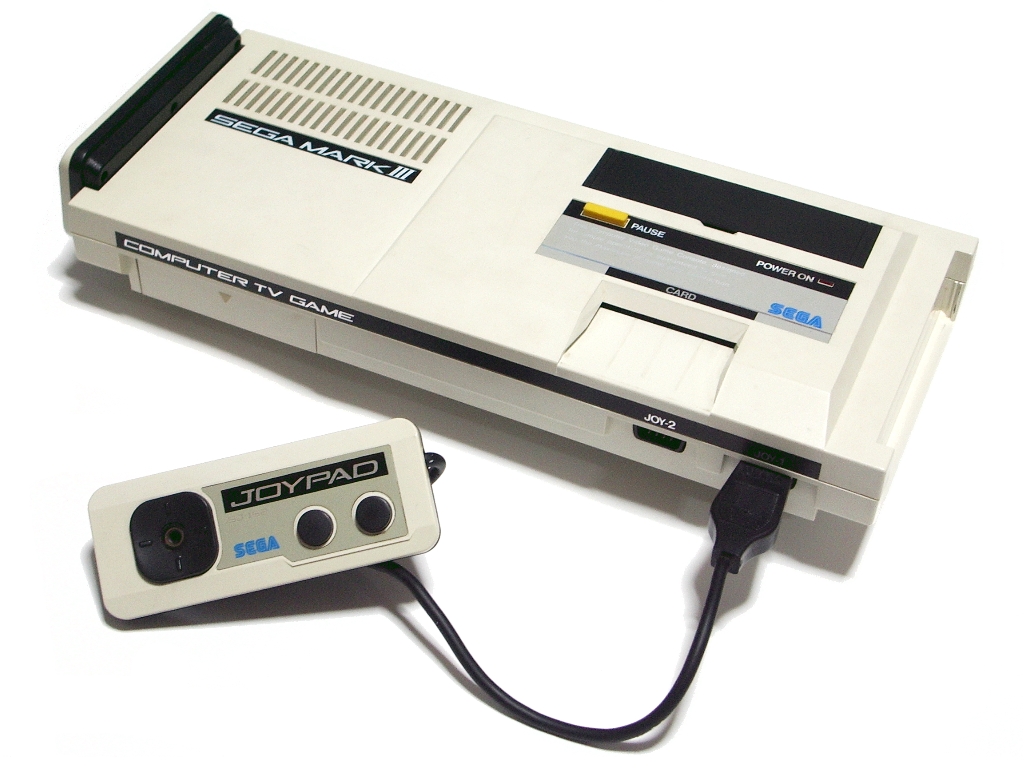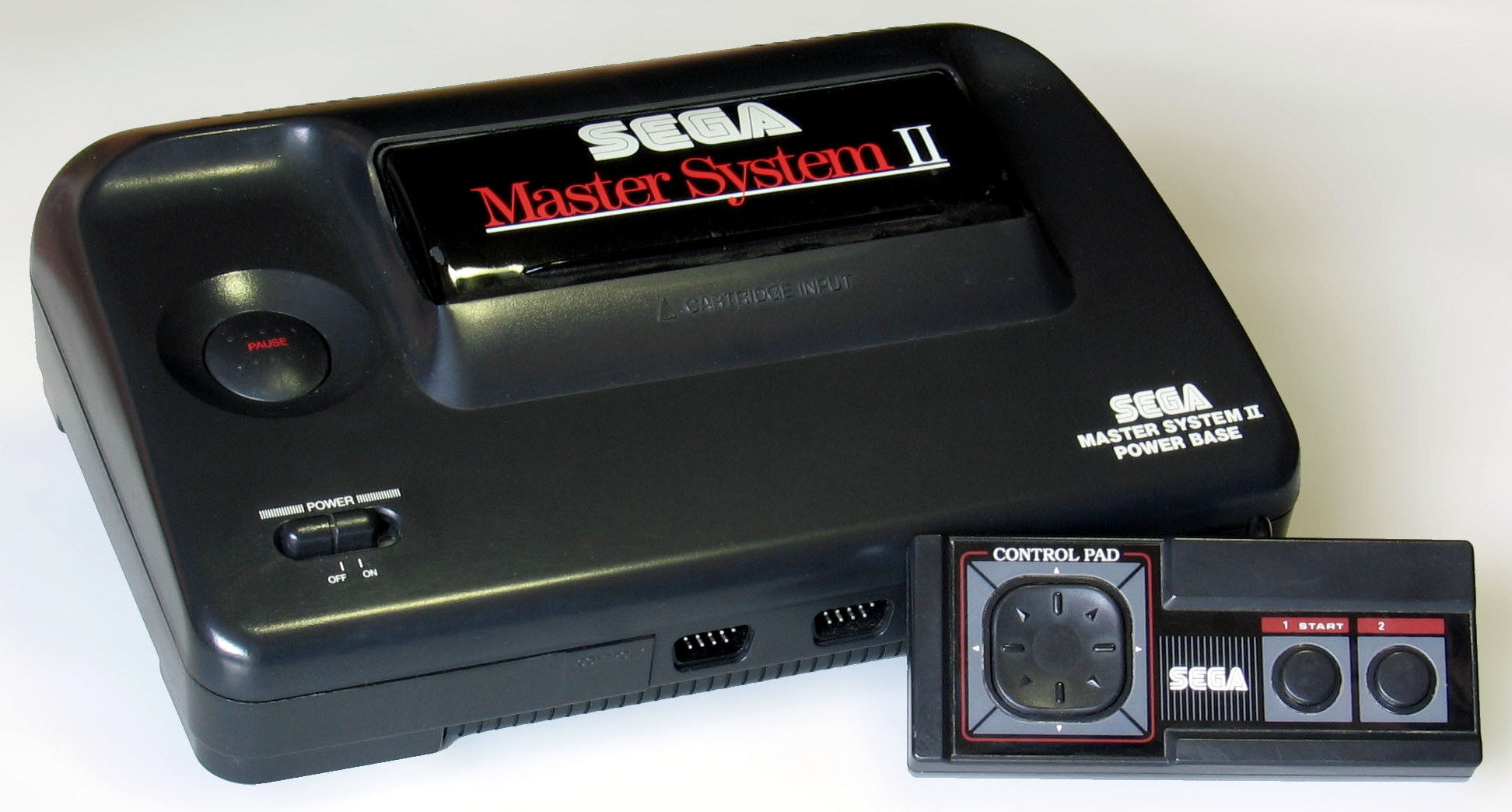The Console War Begins
In 1985, after the discontinuation of the SG-1000 and SG-1000II, Sega wanted to take another attempt at besting Nintendo in
the video game console market. While the SG-1000II was a slight alteration to the SG-1000, they decided to heavily redesign it
this time around. The new console was the Sega Mark III, and it was engineered by the same team of the previous consoles. Part
of the team was engineer Hideki Sato, who said the limitations of the predecessor's TMS9918 graphics chip made it necessary to
redesign the console.

Also Coming to America
That year, Nintendo was about to bring the Famicom to the US as the Nintendo Entertainment System. Clever marketing strategies
and promises for high-quality game releases proved effective in revitalizing their crumbling video game market, and this
inspired Sega to make a console that would perform better from a sales standpoint than in Japan. Sega started by establishing
an American branch in 1986 and persuading Nintendo of America's vice president of sales Bruce Lowry to join them. And so, as
Nintendo had, Sega established their presence in the home video game market by bringing their latest console, the Sega Mark
III, from Japan over to the US as the Master System. It was released in September 1986 for $200.

Also like Nintendo, the Master System was sold with a light gun, two controllers, and a cartridge with two games built-in,
Hang-On and Safari Hunt. It was a mild success, selling 125,000 units by the end of 1986. This was slightly more than the
100,000 Atari 7800s that were sold, and yet that came out in May. But it didn't hold a candle to the NES, which although was
put on the market almost a year earlier, sold a total of 1,100,000 units by the end of the year.
Master System, Amateur Library
Just like in Japan, Sega had issues getting games on the Master System. Only two third-party developers actively made games for
the system. They were former third-party developers for Atari 2600--Activision and Parker Brothers. Part of why there's a lack
of support is because Nintendo rounded up dozens of developers to make original games for the NES and that left the field
barren for Sega. Nintendo's strict licensing policies included only getting to make a handful of games a year and not make them
for other consoles, pressuring developers to make their games with as much care as possible.
Following the Example
In 1987, as the Master System was just not having enough success, Sega sold US distribution rights to toy truck company Tonka,
who lacked experience in game systems. This was another similar move to Nintendo to get the console to sell in toy stores and
reap more sales, but in Nintendo's case, this also served to further push their NES as a toy or entertainment device and not a
game system. However, this sale ended up expediting the demise of the Master System through a series of unfortunate events,
starting with Bruce Lowry leaving Sega after only a year.
Greener Pastures
Later in 1987, the Master System was released in Europe and distributed by several different companies depending on where, like
Mastertronic in the UK, Master Games in France, and Ariolasoft in [West] Germany (this was two years before the wall fell,
after all). Mastertronic signed a deal to handle the distribution of the Master System and gave it a retail price of £99.
However, when retailers ordered a lot of units, Sega struggled to fill them all out by Boxing Day, so some cancelled their
orders. This caused all the Master System distributors to suffer financial issues and lose all faith in Sega, ultimately
deciding to never work with them again. Mastertronic, specifically, sold their distribution rights to Virgin, propelling them
into the console business as Virgin Mastertronic. So, as the new Master System distributors, they decided to port Sega's arcade
games to it and market it as superior to the Commodore 64 and ZX Spectrum home computers. This is a little strange as not only
are they not game consoles, but they both came out in 1982, and are under-speced compared to the Master System. Nevertheless,
it attracted a lot of European game developers, and in short, the console finally found the success it was looking for.
Eventually, in September 1989, another toy company called Tectoy started distributing Master Systems in Brazil.
Living in the Present
Also in 1989, Sega took the marketing and distributing rights back from Tonka, disappointed with how they sold the Master
System. They released the new 16-bit Mega Drive the year before and were preparing an American release for it as the Genesis.
Sega started by releasing the Master System II in the US, which is a cost-reduced second revision that lacked the Sega Card
slot the original had. Nonetheless, it didn't sell well either. As the 16-bit war between them and Nintendo was heating up,
Sega finished with the Master System in the region in early 1992, with a total of 1,500,000 to 2,000,000 units sold. The final
licensed Master System game that came out in the US was, poetically, Sonic the Hedgehog, which put the Genesis in hot
competition with the NES.





